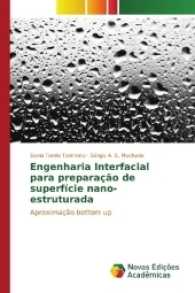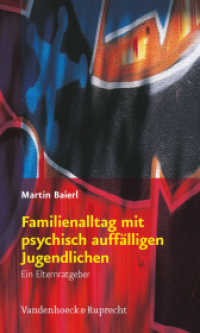- ホーム
- > 洋書
- > 英文書
- > Literary Criticism
Full Description
The Ottoman Canon and the Construction of Arabic and Turkish Literatures fleshes out the Ottoman canon's multilingual character to call for a literary history that can reassess and even move beyond categories that many critics take for granted, such as 'classical Arabic literature' and 'Ottoman literature'. It gives a historically contextualised close reading of works from authors who have been studied as pionneers of Arabic and Turkish literatures, such as Ziya Pasha, Jurj? Zayd?n, Ma?r?f al-Ru??f? and Ahmet Hamdi Tanp?nar.
The book analyses how these authors prepared the arguments and concepts that shape how we study Arabic and Turkish literatures today as they reassessed the relationship among the Ottoman canon's linguistic traditions. Furthermore, it examines the Ottoman reception of pre-Ottoman poets, such as Ka?b ibn Zuhayr, hence opening up new research avenues for Arabic literature, Ottoman studies and comparative literature.
Contents
Acknowledgements
Note On Translation and Transliteration
Introduction: Beyond the Influence Paradigm
1. A Multilingual Ottoman Ocean: Taverns, Exclusions and Ziya Pasha's Harabat
2. Jurjī Zaydān, Literary Comparisons and the Formation of Arabic and Turkish Literatures
3. The Ottoman Tarboosh: Disguise and the Novel Genre in Ahmet Midhat's Hasan Mellah and Muḥammad al-Muwayliḥī's What ʿĪsā ibn Hishām Told Us
4. Kaʿb ibn Zuhayr Weeps for Sultan Murad IV: Baghdad, Translation and the Turkish Language in Maʿrūf al-Ruṣāfī's Works
5. From 'Ottoman Literature is Arabic Literature' to 'Arabs Possess a Literature': Hacı İbrahim, Ahmet Rasim and the Fetters of Influence
6. Family Matters: Oedipus, Tawfīq al-Ḥakīm and Ahmet Hamdi Tanpınar
Conclusion: Modernity, Ottoman Saʿdī and Ottoman al-Mutanabbī
References








